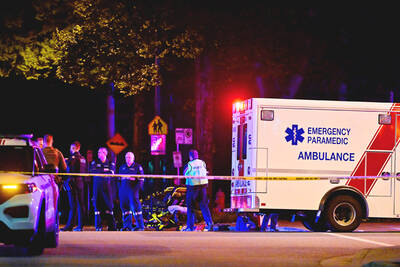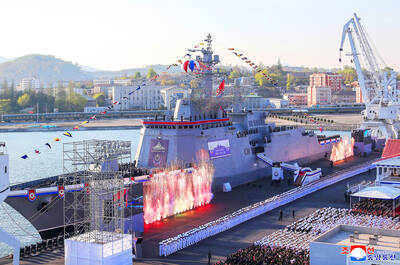When the UK’s National Gallery in London was bequeathed an exquisite painting of the Virgin and Child with an Angel in 1924 officials must have been delighted: an early 16th-century masterpiece by Francesco Francia, the artist from Bologna, was to grace the museum’s collection.
Until, that is, an almost exactly similar work turned up for auction in London in 1954. Problem: which was the original and which a copy? For a time, scholars disagreed over which work had the better claim. (The other is now in the Carnegie Museum, Pittsburgh.)
In 1998 it looked like the London painting had been accepted as genuine. But recent research has been carried out, and the picture examined using infrared reflectography.
That technique revealed what lies beneath the paint: the underdrawing, the first thoughts of the painter as the work was planned.
According to Rachel Billinge, a researcher at the gallery: “We could see little dots, indicating that the image had been ‘pounced’ from a cartoon, which is a perfectly good Renaissance technique. But then I looked at the hair of the angel, and saw what looked like graphite pencil marks.”
And that was the worst possible news. Graphite was available in only one place in the early 16th century: Cumbria. The lovely pencilled curls could not have been drawn by an Italian in the 16th century and the work could not be an original. In fact, it was probably made in the 19th century.
Why, and by whom, nobody knows — but it is certainly exceptionally skilful. Even Marjorie Wieseman, a curator at the National Gallery, says she could not have confidently spotted it as a copy.
This and other fakes and mistakes from the gallery’s collection are to go on show in a major exhibition called Close Examination from this June.
The gallery will be dusting off some of its most embarrassing acquisitions — the ones that, over the years, have been removed from public view and quietly stashed away out of sight after research suggested that they were not quite what they were once thought to be.
In 1874, for instance, the gallery successfully bid for two Botticellis at auction. One of them, Venus and Mars, is now one of the museum’s most famous and recognizable works. The other is not. Soon after its purchase it was quietly removed from the walls of the gallery and attributed to an anonymous follower of the master.
The exhibition will focus attention on the role of the gallery’s scientific department, which has pioneered the latest techniques in infrared imaging as well as X-ray techniques, pigment analysis and dendrochronology, a technique whereby wood can be dated by examining its rings.
The show will explore how such techniques allowed scholars to reveal how a Giovanni Bellini portrait of a friar was overpainted with the emblems of St Peter Martyr (a palm in the hand, a dagger in the chest and a hatchet through the skull); and how one portrait, acquired in 1990, had been tampered with — given a bright-blue background using a pigment not available until the 18th century — to make it resemble a more valuable Holbein, perhaps by a an art dealer on the make.
All this leaves Billinge with a healthy respect for the copyist and faker.
“Sometimes the faker has gone to such lengths you can respect their techniques — much more so than the originals, churned out in a workshop by some bored apprentice,” she said.

TRUMP EFFECT: The win capped one of the most dramatic turnarounds in Canadian political history after the Conservatives had led the Liberals by more than 20 points Canadian Prime Minister Mark Carney yesterday pledged to win US President Donald Trump’s trade war after winning Canada’s election and leading his Liberal Party to another term in power. Following a campaign dominated by Trump’s tariffs and annexation threats, Carney promised to chart “a new path forward” in a world “fundamentally changed” by a US that is newly hostile to free trade. “We are over the shock of the American betrayal, but we should never forget the lessons,” said Carney, who led the central banks of Canada and the UK before entering politics earlier this year. “We will win this trade war and

‘BODIES EVERYWHERE’: The incident occurred at a Filipino festival celebrating an anti-colonial leader, with the driver described as a ‘lone suspect’ known to police Canadian police arrested a man on Saturday after a car plowed into a street party in the western Canadian city of Vancouver, killing a number of people. Authorities said the incident happened shortly after 8pm in Vancouver’s Sunset on Fraser neighborhood as members of the Filipino community gathered to celebrate Lapu Lapu Day. The festival, which commemorates a Filipino anti-colonial leader from the 16th century, falls this year on the weekend before Canada’s election. A 30-year-old local man was arrested at the scene, Vancouver police wrote on X. The driver was a “lone suspect” known to police, a police spokesperson told journalists at the

North Korean leader Kim Jong-un has unveiled a new naval destroyer, claiming it as a significant advancement toward his goal of expanding the operational range and preemptive strike capabilities of his nuclear-armed military, state media said yesterday. North Korea’s state-run Korean Central News Agency (KCNA) said Kim attended the launching ceremony for the 5,000-tonne warship on Friday at the western port of Nampo. Kim framed the arms buildup as a response to perceived threats from the US and its allies in Asia, who have been expanding joint military exercises amid rising tensions over the North’s nuclear program. He added that the acquisition
An American man identified as the son of a deputy director of the CIA was killed in eastern Ukraine last year while fighting under contract for the Russian military, an investigation by independent Russian media said. Michael Alexander Gloss, 21, died on April 4 last year in “Eastern Europe,” an obituary published by his family said. He was the son of Juliane Gallina, who was appointed the deputy director for digital innovation at the CIA in February last year. The story of how the son of a top-ranking US spy died fighting for Russian President Vladimir Putin’s full-scale invasion of